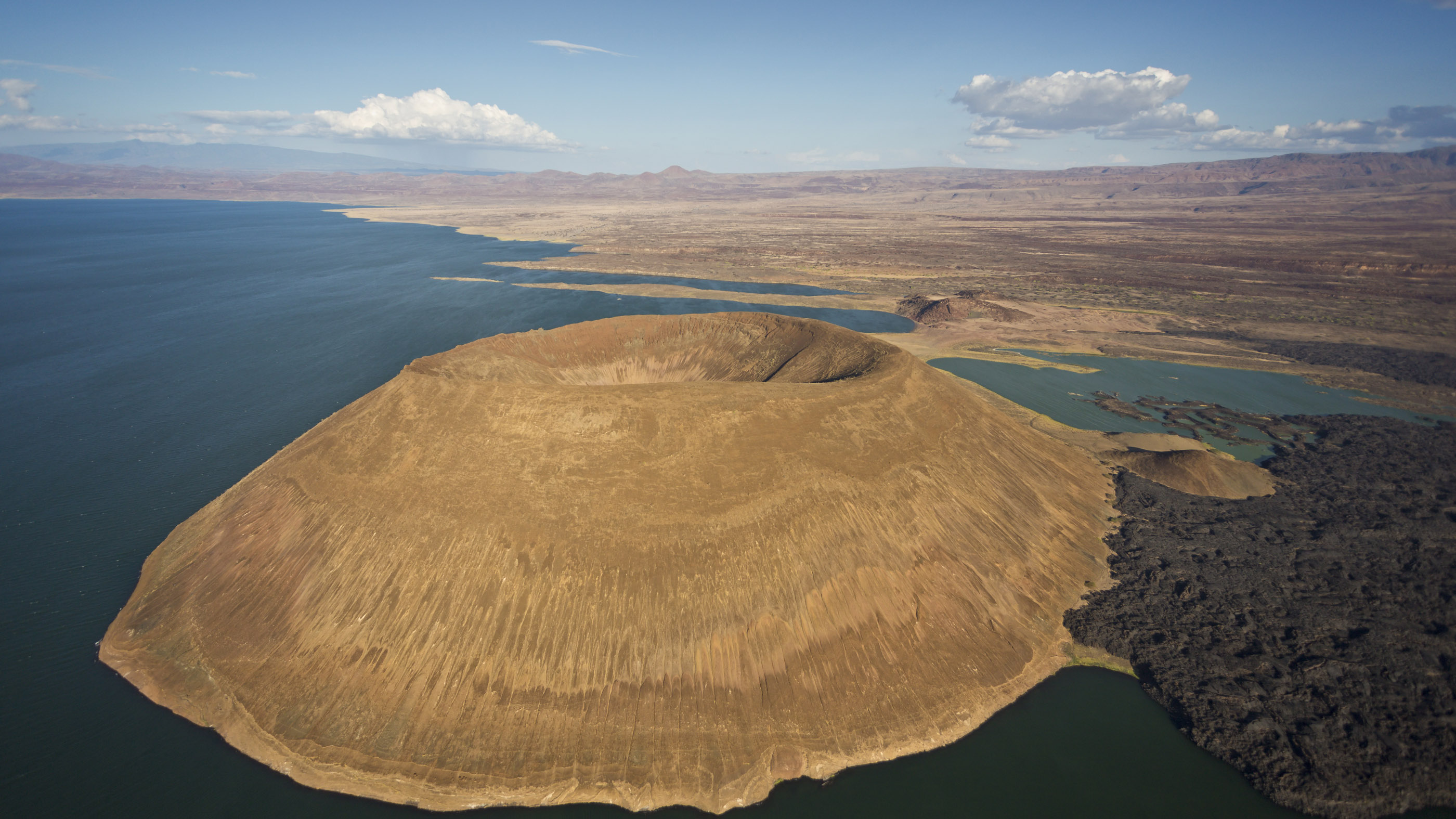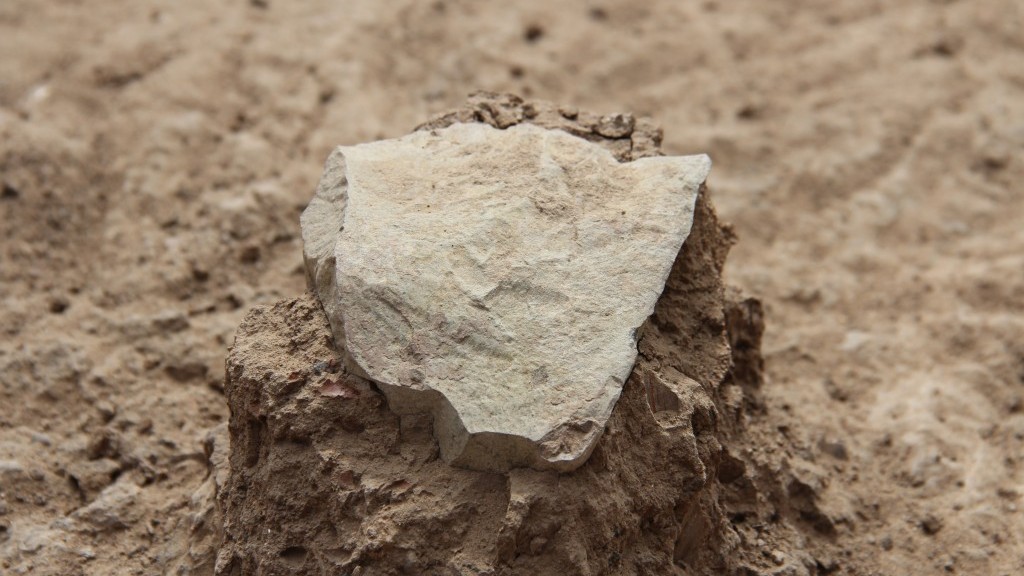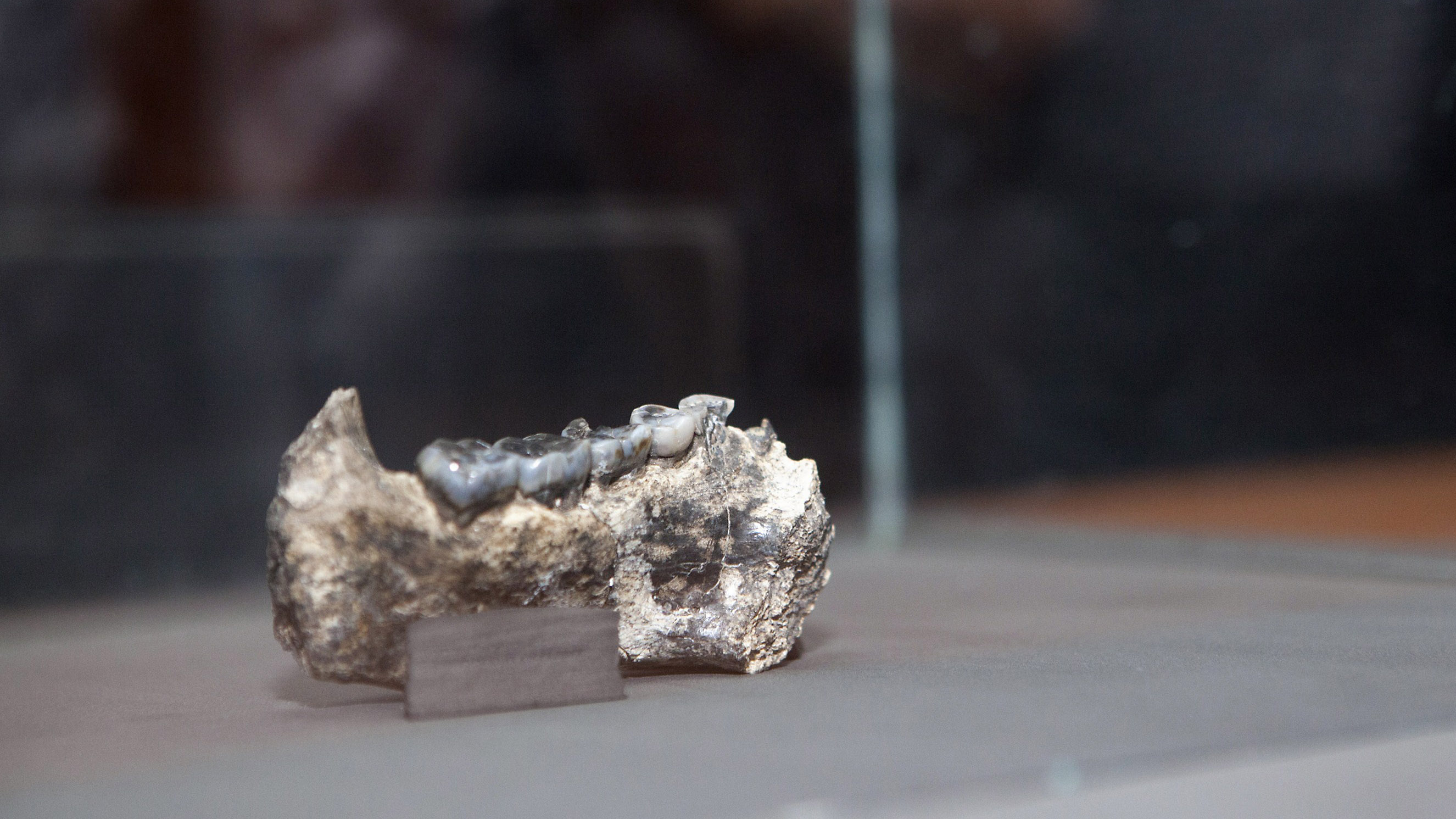What is the oldest-known archaeological site in the world?
The candidates make the Giza pyramids and Stonehenge seem young.

Our human ancestors were roaming Earth as far back as 6 million years ago, but what is the earliest site containing archaeological evidence of their existence?
It turns out, there are two spots — one in Kenya and the other in Ethiopia — that are considered the top candidates for world's oldest archaeological sites, according to about a dozen scholars, all with expertise in prehistoric archaeology and anthropology, who spoke with Live Science.
The question of what is the oldest archaeological site in the world is "a topic that has since recently divided the archaeological community," Yonatan Sahle, a senior lecturer of archaeology at the University of Cape Town in South Africa, told Live Science in an email.
Related: The 25 most mysterious archaeological finds on Earth
The first site, called Lomekwi 3, holds bones of hominins as well as stone artifacts and is located on a low hill in West Turkana, Kenya. In a study published in 2015 in the journal Nature, researchers reported that, by dating the sediment where the artifacts were found, they estimated the age of the site to be about 3.3 million years. The finds "mark a new beginning to the known archaeological record," a team of scientists wrote in the journal article. The tools were likely created by Australopithecus afarensis, a hominin (human ancestors and their relatives) that thrived in the region at the time.
The site is located in a wooded area on a small hill not far from Lake Turkana. It's possible that Australopithecus afarensis was using the stone artifacts to break open nuts the team wrote in the paper. The number of people who lived at the site at any given time is not clear.
"Lomekwi 3 is the oldest known archaeological site in the world," Jason Lewis, assistant director of the Turkana Basin Institute and a co-author of the paper, told Live Science in an email.
Get the world’s most fascinating discoveries delivered straight to your inbox.
Jeremy DeSilva, an associate professor of anthropology at Dartmouth College who was not involved in the study, agreed that Lomekwi 3 is the oldest known archaeological site, but he noted that not all scholars agree. "Lomekwi is controversial, and some of our colleagues remain unconvinced of the antiquity of these tools," DeSilva told Live Science.
Indeed, a number of recent papers "call into question the status of the artifacts at Lomekwi 3, arguing that some of the artifacts were not actually found in a context where the age of the artifacts can be certain," David Braun, an anthropology professor at The George Washington University, told Live Science. In other words, the artifacts may not date to the same time as the sediment that it was found in.
Sahle is one of those archaeologists. "For many of us — myself included — unequivocal evidence for the oldest archaeological occurrences comes in the form of 2.6-million-year-old stone tools from Gona," which is located by the Kada Gona river in Afar, Ethiopia, Sahle said. The dating results for Lomekwi 3 are contested, he noted, and he has serious doubts that the remains found at that site date back 3.3 million years.
The research at Lomekwi 3 was published relatively recently, whereas research at Gona has been published over several decades and has withstood academic scrutiny, Sahle said. "Inferences made on the chronological and behavioral context of [the] Gona archaeological assemblages derive from decades of research and have, therefore, withstood the test of time," Sahle said.

The stone tools at Gona may have been made by Australopithecus garhi, a human ancestor that lived in east Africa around 2.5 million years ago. Fossils of the species have been found near stone tools and they may have been one of the first human ancestors to make sophisticated stone tools Smithsonian's Human Origins project website notes.
"The Lomekwi claims were not adequately demonstrated when announced, and there has [been] no new evidence provided, despite several well-considered criticisms of the original Nature announcement," said Tim White, co-director of the Human Evolution Research Center at the University of California, Berkeley. White agrees that Gona has the best unequivocal evidence for being the oldest archaeological site.
Related: 30 of the world's most valuable treasures that are still missing
On the other hand, some scholars are supportive of the idea that Lomekwi is older than Gona. Rick Potts, director of the Smithsonian's Human Origins Program, is convinced that Lomekwi 3 "is the oldest site with solid evidence of stone-on-stone percussion," meaning that it's the oldest site that has stone artifacts made by human ancestors. He noted that the stone artifacts at Lomekwi 3 appear different from those found at Gona; they are cruder and may not have been used as tools at all. The stone artifacts at Lomekwi 3 "show awkward fracturing of the rocks, including large, thick, irregularly shaped flakes that could have been the accidental byproducts of pounding — for what purpose, no one currently knows," Potts wrote in an email, noting that people at Lomekwi 3 may not have been creating tools but rather pounding rocks together for unknown reasons. Even if the Lomekwi 3 artifacts weren't used as tools, they would still be considered artifacts created by humans.
Brian Villmoare, an associate professor of anthropology at the University of Nevada, told Live Science, "I do tend to think that Australopithecus afarensis could have made stone tools," but he noted that he has not examined the Lomekwi 3 artifacts.
A third candidate?
Braun said that if future fieldwork cannot alleviate concerns about the dating of Lomekwi 3, his second choice for the oldest archaeological site would be Ledi-Geraru in Afar, Ethiopia, which dates back about 2.8 million years.

At Ledi-Geraru, researchers found a partial hominin mandible with teeth, and they dated it by examining the age of the surrounding sediment, they reported in the journal Science in 2015.
Sahle expressed doubts about the dating of this site, saying that it may be considerably younger than 2.8 million years and that Gona is the site with the best unequivocal evidence.
Regardless of which of these archaeological sites is the oldest, all of them make the Giza pyramids (which are about 4,500 years old) and Stonehenge (which is roughly 5,000 years old) relatively young by comparison.
Originally published on Live Science.

Owen Jarus is a regular contributor to Live Science who writes about archaeology and humans' past. He has also written for The Independent (UK), The Canadian Press (CP) and The Associated Press (AP), among others. Owen has a bachelor of arts degree from the University of Toronto and a journalism degree from Ryerson University.

